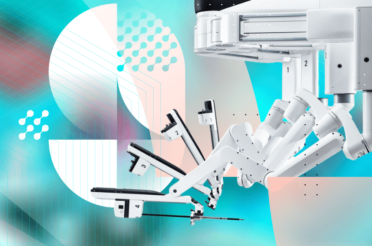The world has seen problems before where there has been a lack of medical supplies and medication on a national scale. 2010 was such a year for America, when because of inefficient inventory management many patients were subject to delayed treatments.
Almost every single healthcare organization on a national scale experienced a drug shortage. The entire issue was reason enough to invest more resources into developing better inventory management practices. What COVID-19 showed us, however, was that those practices were just not good enough.
During the pandemic, the same problem from 2010 America became a global crisis in the span of just a few days. With the help of inventory management medical supplies are able to reach their destinations and be used appropriately to help people.
That is precisely why it is an essential topic to understand the best practices for healthcare inventory management in the modern world.
What is healthcare inventory management and why is it important?

Developing a hospital inventory management system is what allows healthcare providers to make sure they have the necessary medical equipment to provide excellent patient care. There are many issues with the current way healthcare organizations track inventory.
Thankfully, there are practices that reduce inventory supply costs and promote staff efficiency in hospitals. Many hospitals complain that they aren’t previously informed of any drug shortages. And when healthcare facilities get informed of such shortages, they are rarely told how long the shortage will last. But how can inventory tracking help all of this?

Uncover the benefits of having an optimized inventory management.
Transform your inventory management system by letting BGO strategists guide you to smarter inventory solutions.

Keeping track of different inventory items is what a proper management system is best at:
- Medical equipment
- Medical supplies
- Healthcare products
- Patient prescriptions
- Patient records
Being able to manage the entire inventory of a business, let alone a hospital, is very difficult. In the case of a small facility, everything can be noted down and followed up on with an Excel spreadsheet.
But when we’re talking about a hospital, the given inventory is too big and complicated. In such a case, what is preferred by medical providers is an inventory management system. Management systems like that improve staff efficiency, reduce costs and limit human error.
Many medical facilities are pressured to reduce inventory costs and a streamlined workflow process can help cut spending. According to research, 30% of $3.6 trillion spent on healthcare in the USA is wasted. A big part of that is due to inefficient planning for surgeries.
Before surgery begins, a lot of time is wasted on getting the proper equipment and supplies. The cost of this wasted time is estimated at $1,800 per surgery, which amounts to $28 million annually. With proper management, these inventory supply costs can be reduced by a significant amount.
Benefits of inventory management

An inventory management system can help streamline healthcare supply chain operations which can greatly reduce costs for medical providers. What the system offers is accurate tracking of a facility’s purchase orders, inventory records, and prescriptions.
The system allows an organization to limit supply loss and save money by keeping updated and steady inventory levels.
Improved accuracy
A system that keeps track of your inventory can help limit human errors in the supply chain management process. Instead of staff members having to manually enter data or scan barcodes, the entire operation can be automated. This can ensure that inventory use is conducted properly and everything is taken into account.
Increased efficiency
Such a management system can increase efficiency by automating daily operations such as inventory data tracking, fulfilling orders, and procuring equipment. Through this process, medical staff members don’t have to be burdened by such problems as keeping track of inventory use and other tasks that they would usually be responsible for.
This improvement and freeing of their schedule mean faster and more efficient workflow and optimized conducting of supply chain operations.
Better patient care
A lot of the time, patients require certain medications from a hospital pharmacy. Other times, doctors need certain medical instruments and drugs for an operation or procedure. When the resources needed are not ready and available, patients have to wait for days or even weeks before they get a follow-up.
Having a system that keeps track of everything that is needed for a business in the healthcare industry to run smoothly means more satisfied patients.
Improved inventory visibility
The prices of everything have gotten higher over the past couple of years. This process has not excluded the prices of medication, of course. A lot of pharmaceutical organizations have gone bankrupt or at the very least, stopped producing certain medications.
If a hospital has been using a specific type of drug and finds out that the medication is no longer on the market, the organization would have trouble finding an immediate substitute. Having an inventory system available also means getting to know immediately when the levels of certain drugs are running low and being able to order new ones.
Improved analytics
An inventory management system provides healthcare professionals with the ability to receive better-analyzed statistics concerning medication levels, inventory performance, and order fulfillment.
The system also offers a clear report on current requirements and trends. Through the use of digitized reports, healthcare facilities can make more efficient and informed decisions about their inventory and the way they manage it.
Types of healthcare inventory management

Many hospitals don’t implement inventory management solutions which lead to increased costs and many expired products. There are two different healthcare inventory management types that can standardize the entire process. It is important to understand both the advantages and disadvantages of the two types to make an informed decision on which one is ideal for your facility.
Periodic inventory
This method of managing supplies and equipment is focused on having employees update inventory manually. The inventory is checked periodically which can vary from a week to an even shorter period of time.
This type of management is usually more suitable for smaller facilities since there is often less to keep track of compared to larger hospitals or healthcare organizations. Bigger practices and providers have much more supplies to inventory and a lot more work to take care of.
In such cases, this type isn’t recommended as it takes up a lot of the employees’ time which can be better spent with patients. The method also allows a lot of opportunities where medical staff members can make mistakes regarding inventory management. The human error part of it all is in no way avoided when applying this practice.

Revolutionize your healthcare practice with optimized inventory management.
Navigate the complexities of healthcare inventory management with the help of our software development experts at BGO.
Perpetual inventory
The perpetual inventory management method uses a system to automatically update inventory data all the time. It is possible that the cost of software that can accomplish the task of monitoring medical inventory may be significantly higher than having it manually done. The benefits of utilizing such software, however, outweigh its cost.
Perpetual inventory systems take into account all the purchases, deliveries, additions, and uses of supplies and equipment in a healthcare facility. The systems limit human error to a minimum, by doing all the calculations and the tracking through software built exactly for that.
Such systems take a lot of the burden off of doctors and medical staff in general and allow them to focus more on their patient’s care. Alerts and notifications are also there to remind human personnel to account for low or missing quantities of necessary supplies.
What is medical inventory software?
Medical inventory software is designed to keep track of healthcare-related products. Such products include surgical supplies, medications, and wheelchairs. The physical inventory counts of specific pharmaceuticals, lab kits, and MRI machines are also taken into account.
The automated inventory management system can also monitor expiration dates, collect data, make sure that the maintenance scheduled for equipment is done on time, and follow the exact place of different products throughout multiple locations in a hospital system.
Benefits of healthcare inventory software
The benefits that medical inventory management software is usually associated with are that it makes facilities more productive, cost-efficient, and reduces labor and time for certain tasks.
There are, however, specific ways the software accomplishes this:
- Effectively track product and medication location to limit misuse and misplacement.
- Alert medical staff of the recalls of certain products to ensure no unsafe medication or defective equipment is used; the software follows the exact location of the product to ensure compliance.
- Manage costs by acquiring the right product at the right time; eliminate the possibility of using products out of date and limit overstocking.
- Make informed decisions concerning inventory management through better visibility of stock levels and item-specific information.
Pricing of medical inventory software
Medical inventory software offers a lot of benefits. It has to be considered, however, that these benefits can only be possible if the software is purchased from a reliable vendor. Such software is oftentimes not cheap. But hospital executives have to better understand what they are paying for in order to get the full worth.
There are mainly two ways such software can be acquired. The first is by getting a trusted software developer to create the program for you. In such cases, it is also preferable if the developers go through the manual process of teaching facility staff how to work with the software.
The system would also demand support if any problems arise. Future needs of a program have to be taken into account.
The other option for using software like that is to pay in the form of a subscription to vendors with Software-as-a-Service (SaaS) products. This way, the subscriptions can vary between monthly or annual, or even per user. The choice of using an already created program is definitely faster as it does not demand planning together with the facility itself.
The best practices for healthcare inventory software

The right way to manage healthcare inventory can be a tricky job. Hospital administrators have to make sure that the facility has enough products, equipment, and supplies to meet demand of doctors and nurses.
It also has to be taken into consideration, not to overstock on medications and other supplies, because that can negatively influence the budget and take up a lot of space. There are, of course, a couple of practices that can help with figuring out exactly how to manage the entire process better.
Assign responsibilities in a clear manner
In order for an organization, especially a healthcare one, to function properly and efficiently, administrators have to delegate all the responsibilities clearly to the staff. In a sense, everyone has to fully understand their role and what is expected of them.
It doesn’t matter if an employee’s job description is taking care of sanitation, ordering supplies, or full-proofing purchase orders to make sure everything is accurate. All staff members have to be given clear instructions on what to handle.
Gather supply chain data
Inventory management software offers many advantages. One such advantage is that it keeps detailed records and generates reports on data it collects from the supply chain. Having this well of information and not putting it to use can be wasteful and an organization can miss out on great opportunities to save money.
One of the ways healthcare organizations have been using supply chain data is by designing software systems that utilize value-based models. Value-based models can more accurately determine the link between supplies needed and the patient outcome they ensure. An organization can then create a more efficient inventory.
Be open to new, available technologies
In a healthcare facility, there are many ways to keep track of supplies. Most hospitals have been using some form of inventory management tools, including smart software.
The question the staff and the management team should be discussing is whether the current computer equipment meets the needs of the facility. There may be a need for an update in the software or to consider getting a completely new system.
In case of acquiring brand new technology, the software can be bought ready or ordered to be custom designed for your healthcare organization. In either case, a whole new program also means a whole new way of doing things. It should be considered that medical staff may need a period of developing new procedures.
Analyze usage and order frequency
One of the most important statistics is understanding the ratio between how many supplies are ordered and how many of them are used. A healthcare facility has to be sure how much of a certain item it is ordering per week, month, or quarter and exactly what amount of that item it is using in the same time period.
In the cases where the numbers don’t match, it can mean that you are ordering too little or too much of the given product. The best way to make sure a stable ratio is kept, is by checking on this statistic frequently.
Organization of the supply room
How much inventory is left and whether there is a need to create purchase orders, can easily be handled by medical management software. The software, however, needs specific data to be entered into it.
Such data can range from serial numbers to avoid redundancies, to date of purchase to put everything into specific timeframes. In order for the necessary data to be entered, the supplies have to be readily available for employees to find and check on.
Every facility has at least one supply room. If this room is not kept organized and tidy, where everything has its place, then employees are forced to waste time in finding what they are looking for or just the specific items that they need to account for.
One way of reducing clutter and chaos in a supply room is to create tags and assign labels to different items. The tags can be put on the shelves themselves to signify when a batch of items has been purchased, for example. This way no revenue needs to be lost due to a disorganized closet.
Improving recordkeeping
One of the most valued practices and best software features to have at your disposal is detailed recordkeeping. Having enough information is what is the biggest prerequisite to making informed decisions.
The information gathered in your records has to be frequently checked to make sure there are no discrepancies. The software you are using should also be equipped with an analyzing feature to screen all the data and make prognoses on future facility needs.
Throughout the article, we have discussed how poor inventory management influences many aspects of the way a healthcare facility conducts its business. The inventory of a hospital determines the way work is done.
Inventory use is a core principle that needs to be considered carefully in order for medical professionals to do their job. A great way to handle this side of the business is by implementing inventory management software.

Whether you’re a startup, a Fortune 100 company or a government organisation, our team can deliver a solution that works for you.
BGO Software
With such a system healthcare providers can focus directly on patient care and not waste their time looking for medical supplies. The best way to acquire such software is to entrust its development to a partner that has had extensive experience in the field of developing software in the healthcare industry.














